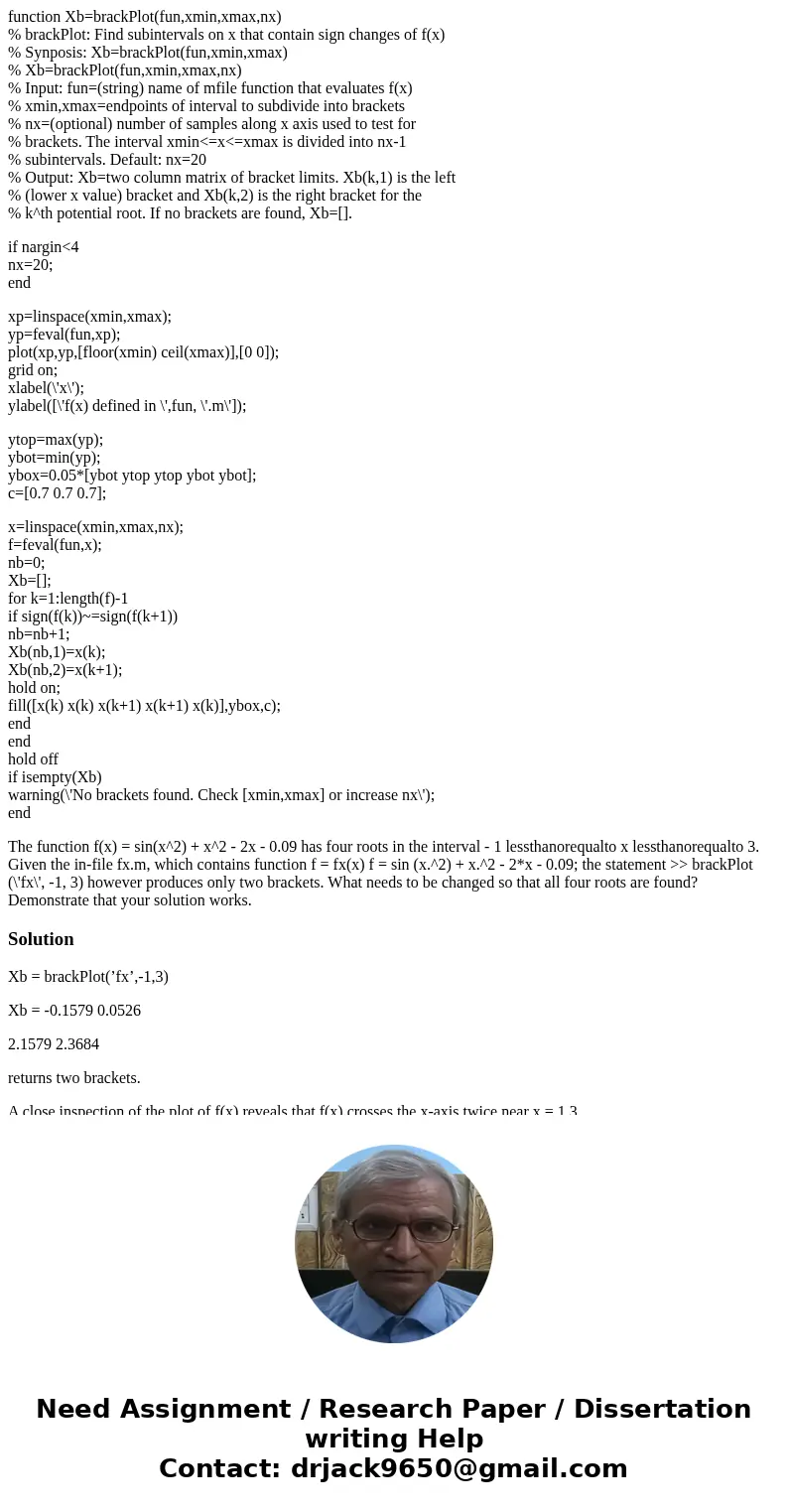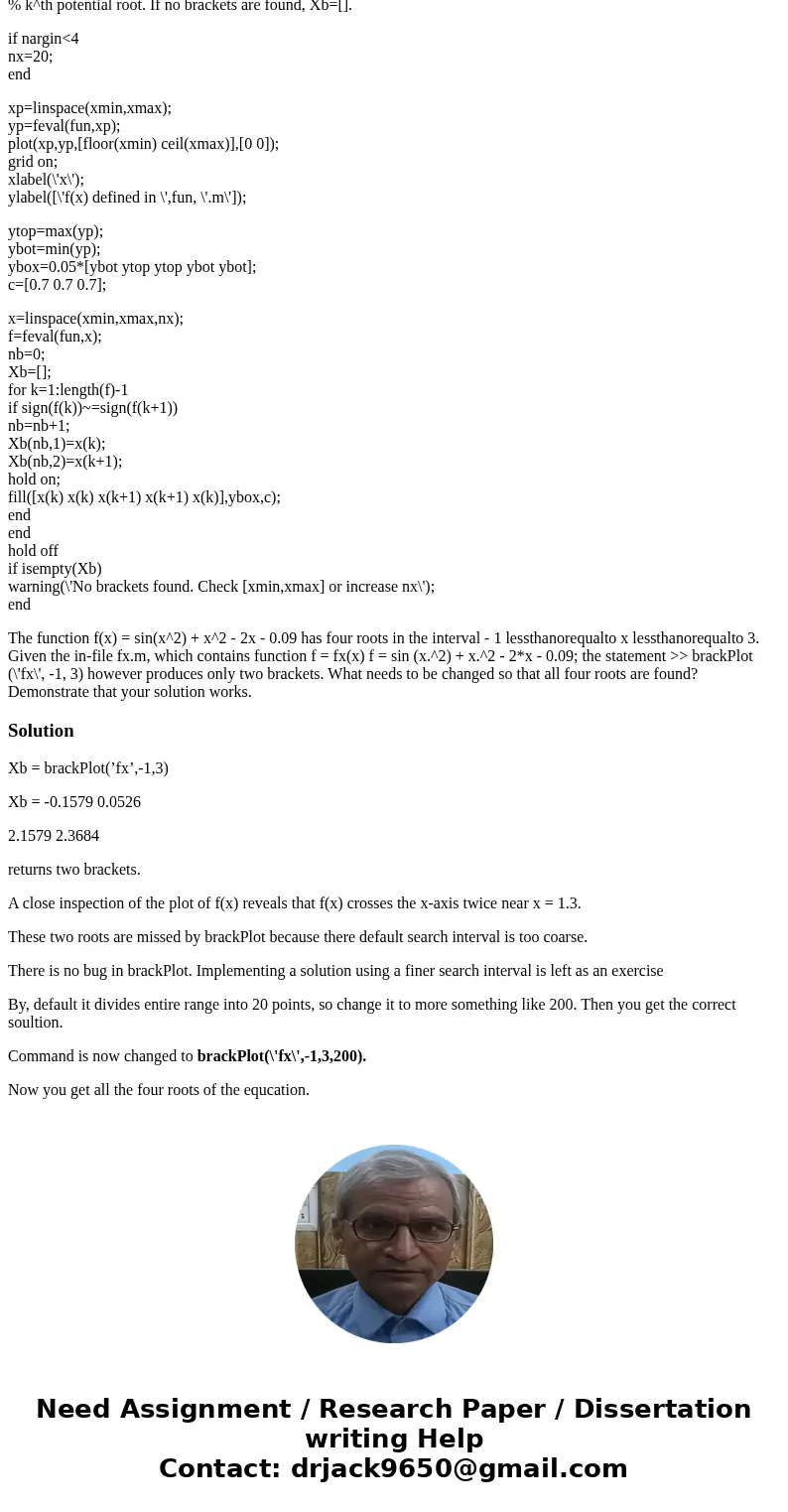function XbbrackPlotfunxminxmaxnx brackPlot Find subinterva
function Xb=brackPlot(fun,xmin,xmax,nx)
% brackPlot: Find subintervals on x that contain sign changes of f(x)
% Synposis: Xb=brackPlot(fun,xmin,xmax)
% Xb=brackPlot(fun,xmin,xmax,nx)
% Input: fun=(string) name of mfile function that evaluates f(x)
% xmin,xmax=endpoints of interval to subdivide into brackets
% nx=(optional) number of samples along x axis used to test for
% brackets. The interval xmin<=x<=xmax is divided into nx-1
% subintervals. Default: nx=20
% Output: Xb=two column matrix of bracket limits. Xb(k,1) is the left
% (lower x value) bracket and Xb(k,2) is the right bracket for the
% k^th potential root. If no brackets are found, Xb=[].
if nargin<4
nx=20;
end
xp=linspace(xmin,xmax);
yp=feval(fun,xp);
plot(xp,yp,[floor(xmin) ceil(xmax)],[0 0]);
grid on;
xlabel(\'x\');
ylabel([\'f(x) defined in \',fun, \'.m\']);
ytop=max(yp);
ybot=min(yp);
ybox=0.05*[ybot ytop ytop ybot ybot];
c=[0.7 0.7 0.7];
x=linspace(xmin,xmax,nx);
f=feval(fun,x);
nb=0;
Xb=[];
for k=1:length(f)-1
if sign(f(k))~=sign(f(k+1))
nb=nb+1;
Xb(nb,1)=x(k);
Xb(nb,2)=x(k+1);
hold on;
fill([x(k) x(k) x(k+1) x(k+1) x(k)],ybox,c);
end
end
hold off
if isempty(Xb)
warning(\'No brackets found. Check [xmin,xmax] or increase nx\');
end
Solution
Xb = brackPlot(’fx’,-1,3)
Xb = -0.1579 0.0526
2.1579 2.3684
returns two brackets.
A close inspection of the plot of f(x) reveals that f(x) crosses the x-axis twice near x = 1.3.
These two roots are missed by brackPlot because there default search interval is too coarse.
There is no bug in brackPlot. Implementing a solution using a finer search interval is left as an exercise
By, default it divides entire range into 20 points, so change it to more something like 200. Then you get the correct soultion.
Command is now changed to brackPlot(\'fx\',-1,3,200).
Now you get all the four roots of the equcation.


 Homework Sourse
Homework Sourse